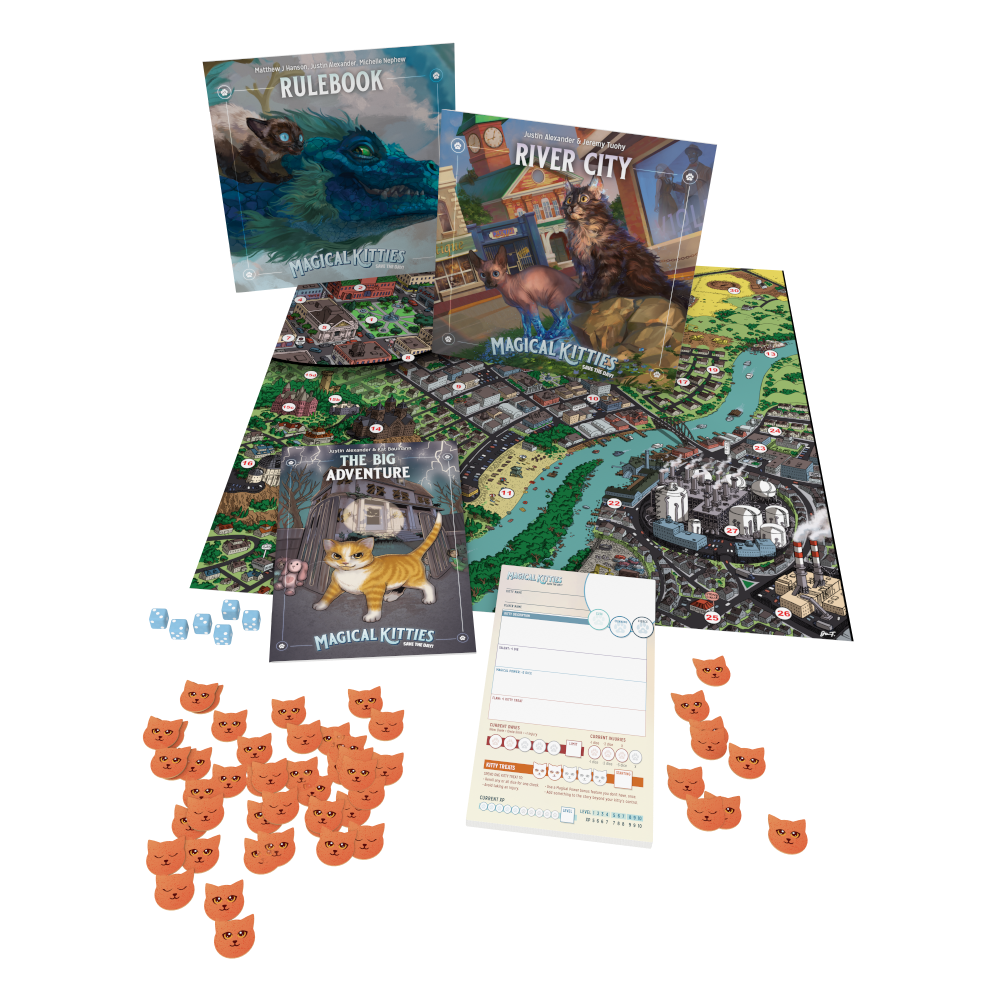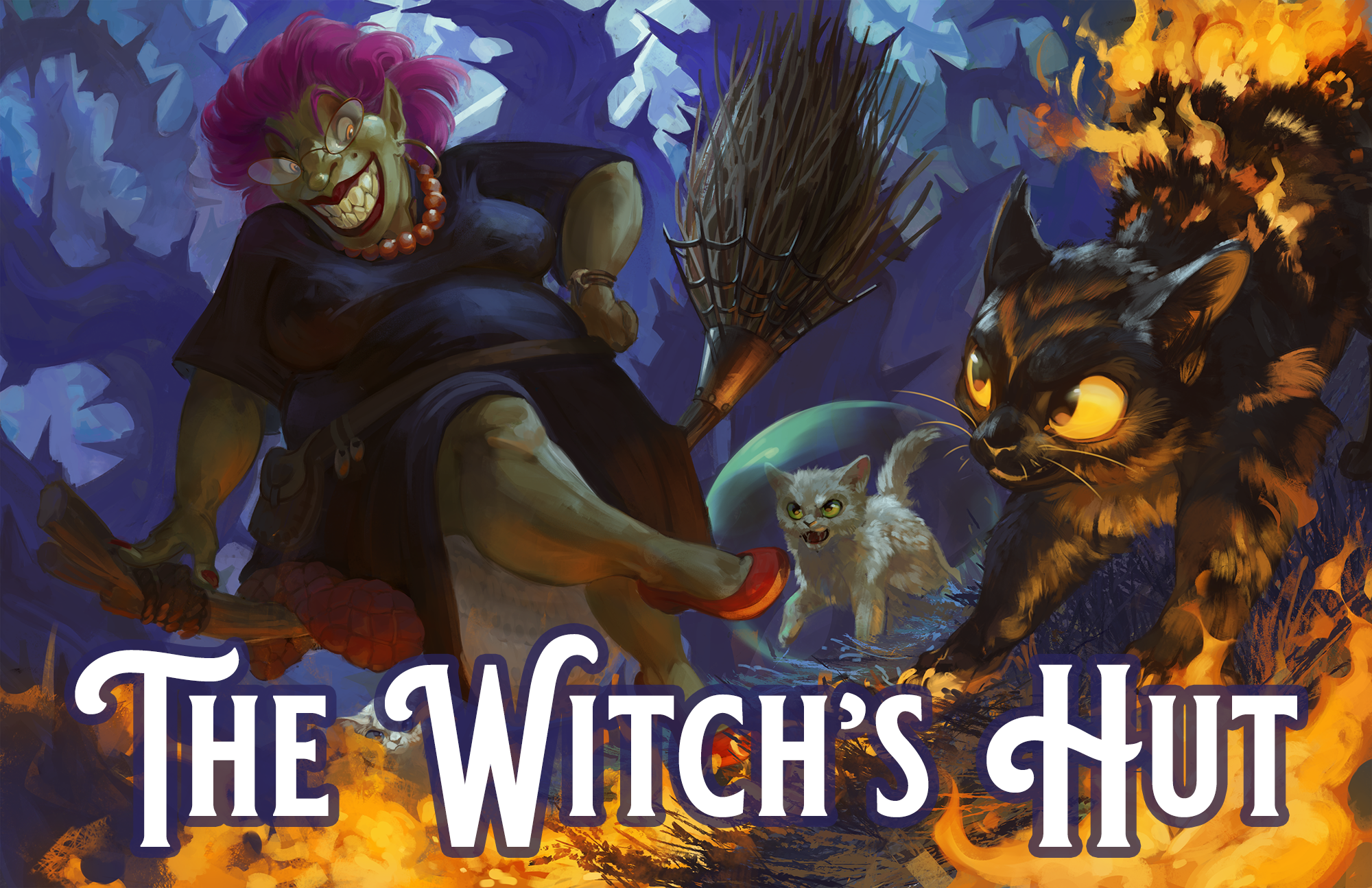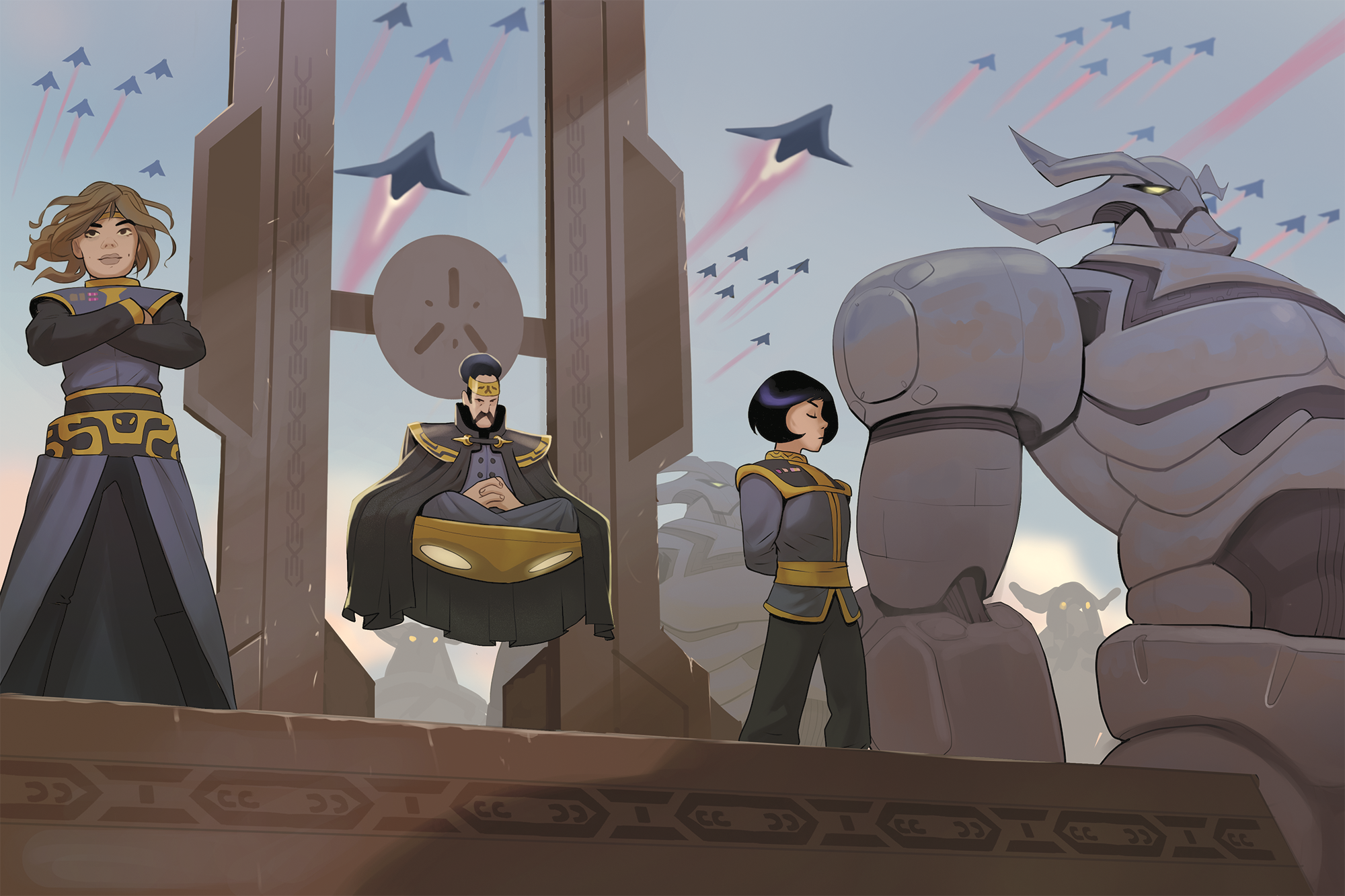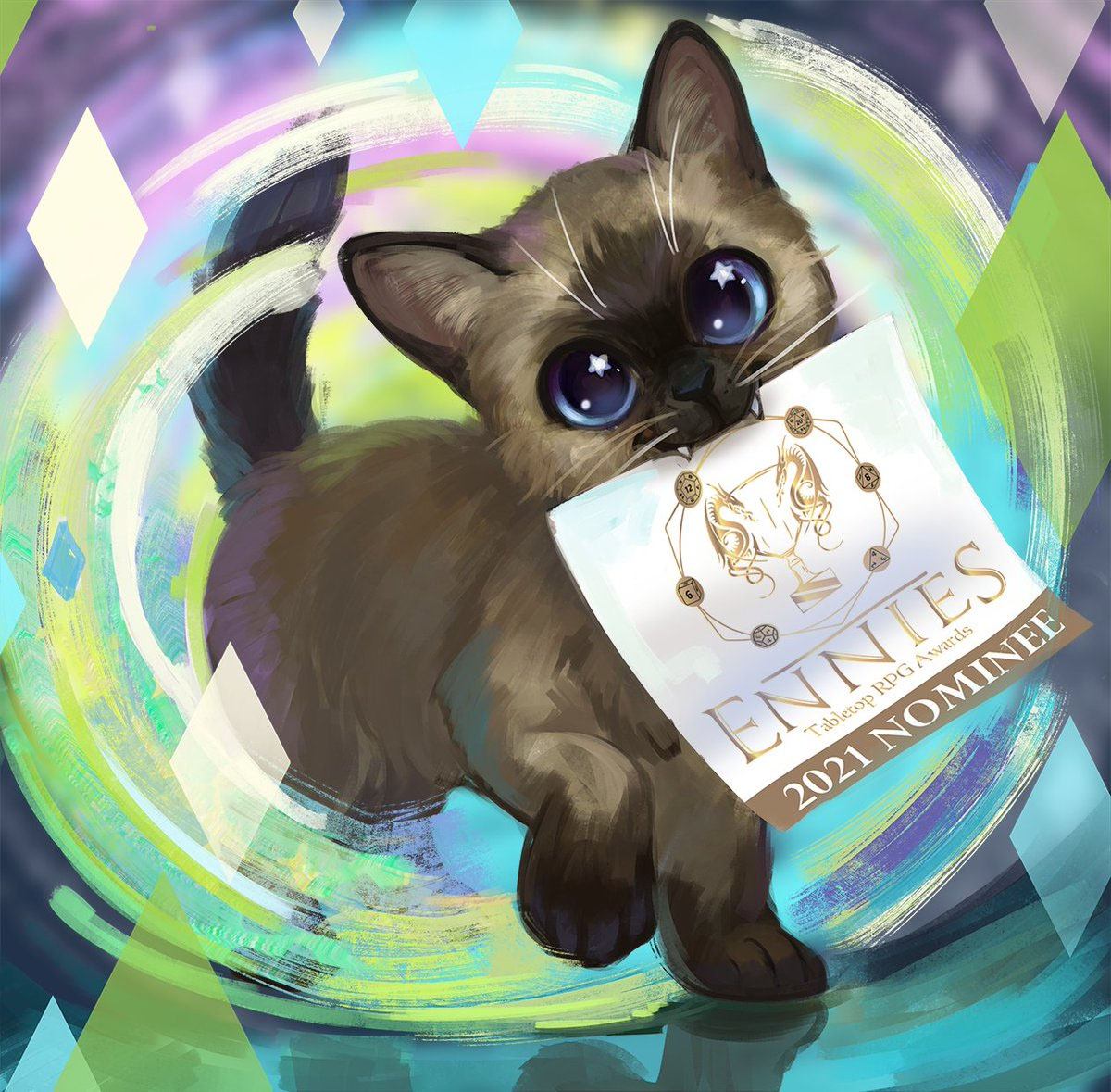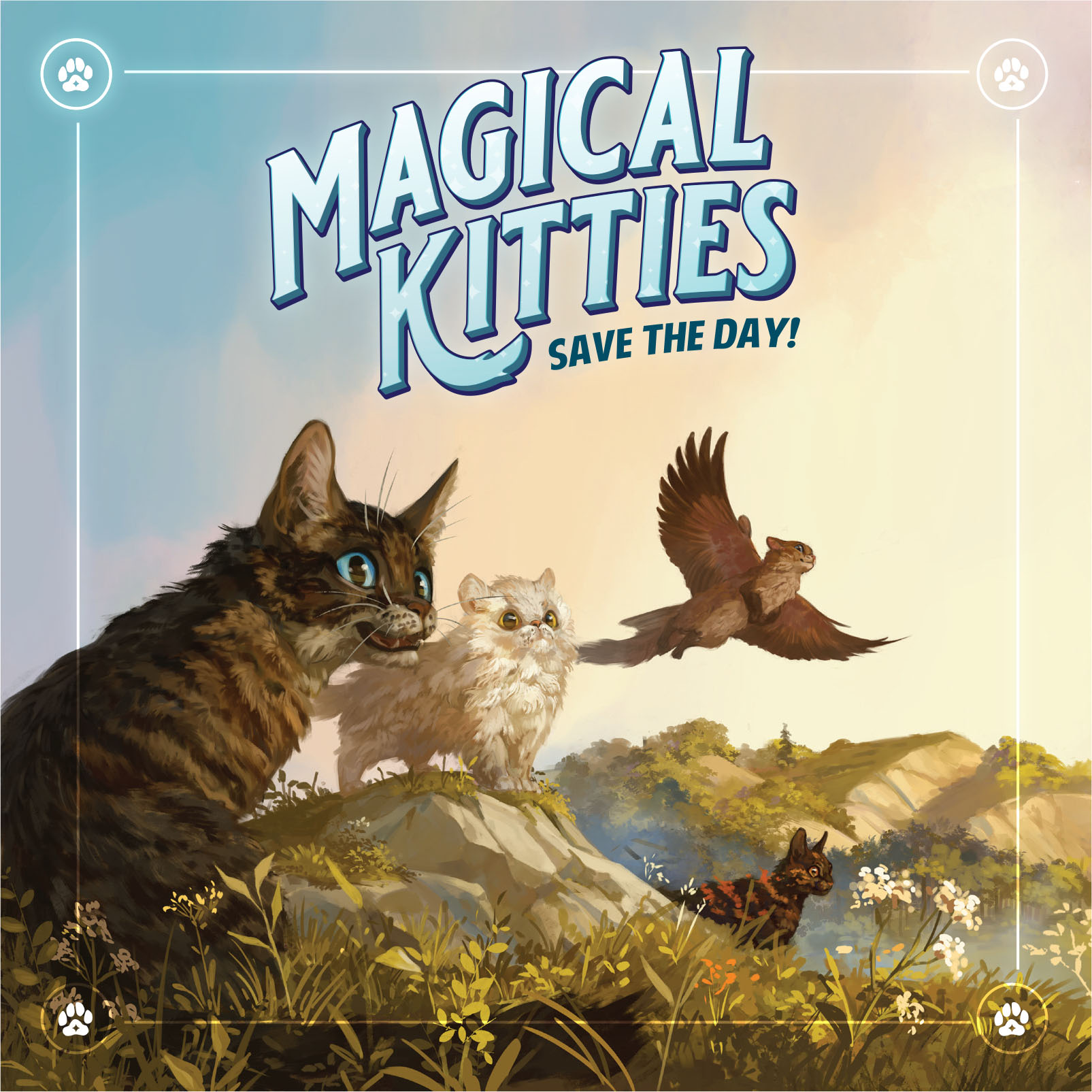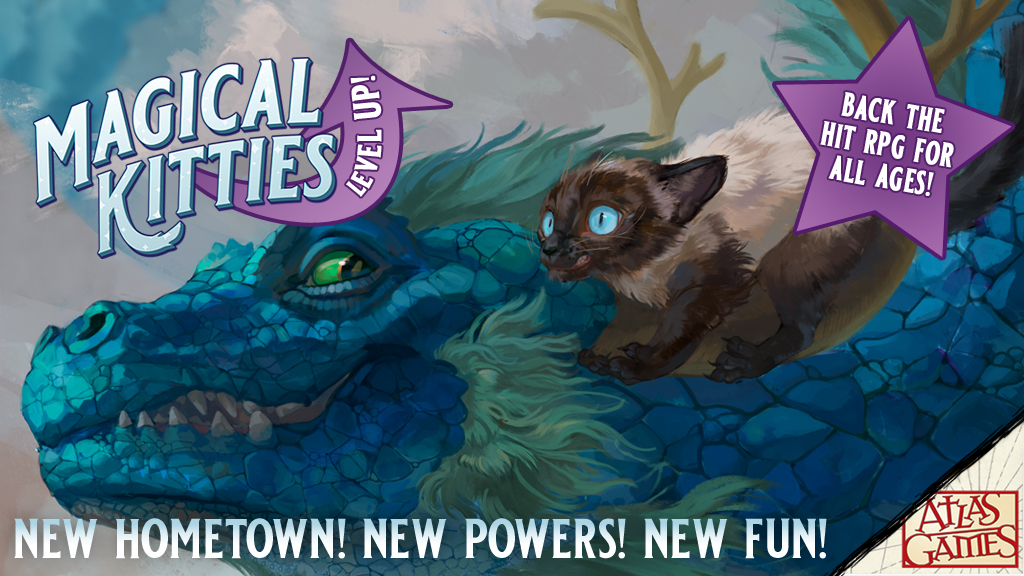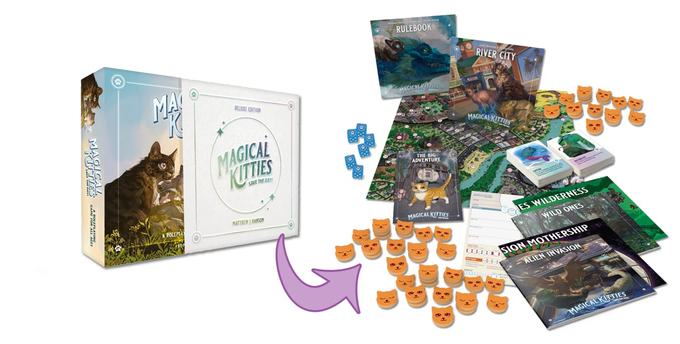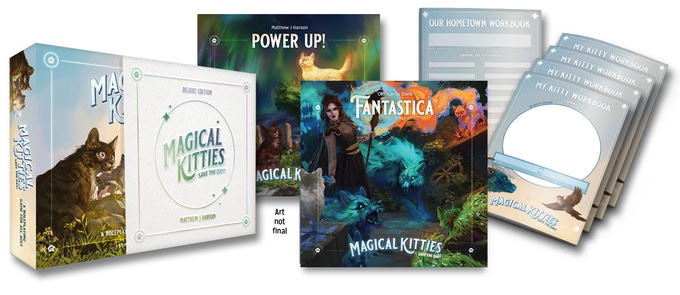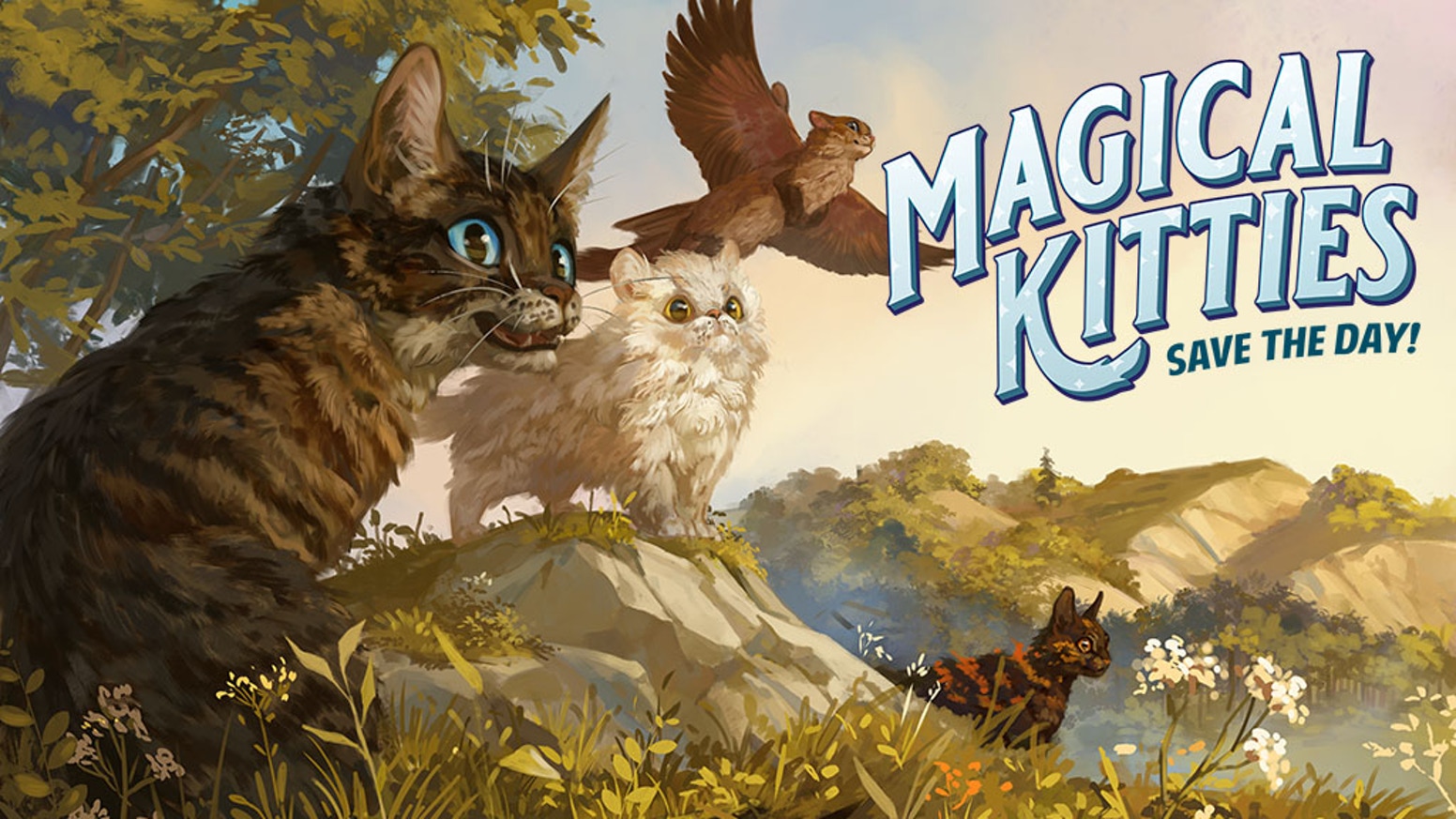
Magical Kitties Save the Day is the new roleplaying game from Atlas Games. The first edition was created by Matthew J. Hanson and published as a PDF-only release on DriveThruRPG. Michelle Nephew, one of the co-owners of Atlas, encountered the game at a local game convention, immediately bought a copy, and began running a multi-year campaign for her kids. It was an incredibly fun game, and back in 2018 we realized that Atlas was perfectly positioned to bring the game to a much larger audience.
Michelle, Matthew, and I began work on the game’s second edition, which would be designed for print and worldwide distribution.
But I wanted to do more than just print a copy of the game as it already existed: Not only had we all learned a lot from running and playing the game, we also had the opportunity to create a truly unique game for all-ages that would not only introduce roleplaying games to new players, but also teach new players how to become game masters for the first time.
I’ll probably talk more about those features at a future date. For today, I’d like to take a peek at the Magical Powers in Magical Kitties.
See, in Magical Kitties Save the Day you play a magical kitty. Every magical kitty has a human. And every human has a Problem. You need to use your Magical Powers to solve those Problems and save the day. (The trick, though, is that kitties and humans all live in hometowns which also have Problems — things like vampires, time-traveling dinosaurs, and alien invasions. These hometown Problems make human Problems worse, so if you want to help your human solve their Problems, you’ll need to solve their hometown Problems, too.)
The first edition of Magical Kitties Save the Day featured eighteen Magical Powers for the kitties. For the second edition, I wanted to expand this to thirty-six powers.
Why thirty-six?
This was primarily determined by two of our design goals:
First, I wanted a fast method of character creation, which meant a default method featuring random generation. (I talk more about why this is important in On the Importance of Character Creation, but the short version is that nothing hooks a new player like actually creating their character; it gets them thinking about all the cool things they’re going to do with their magical kitty. 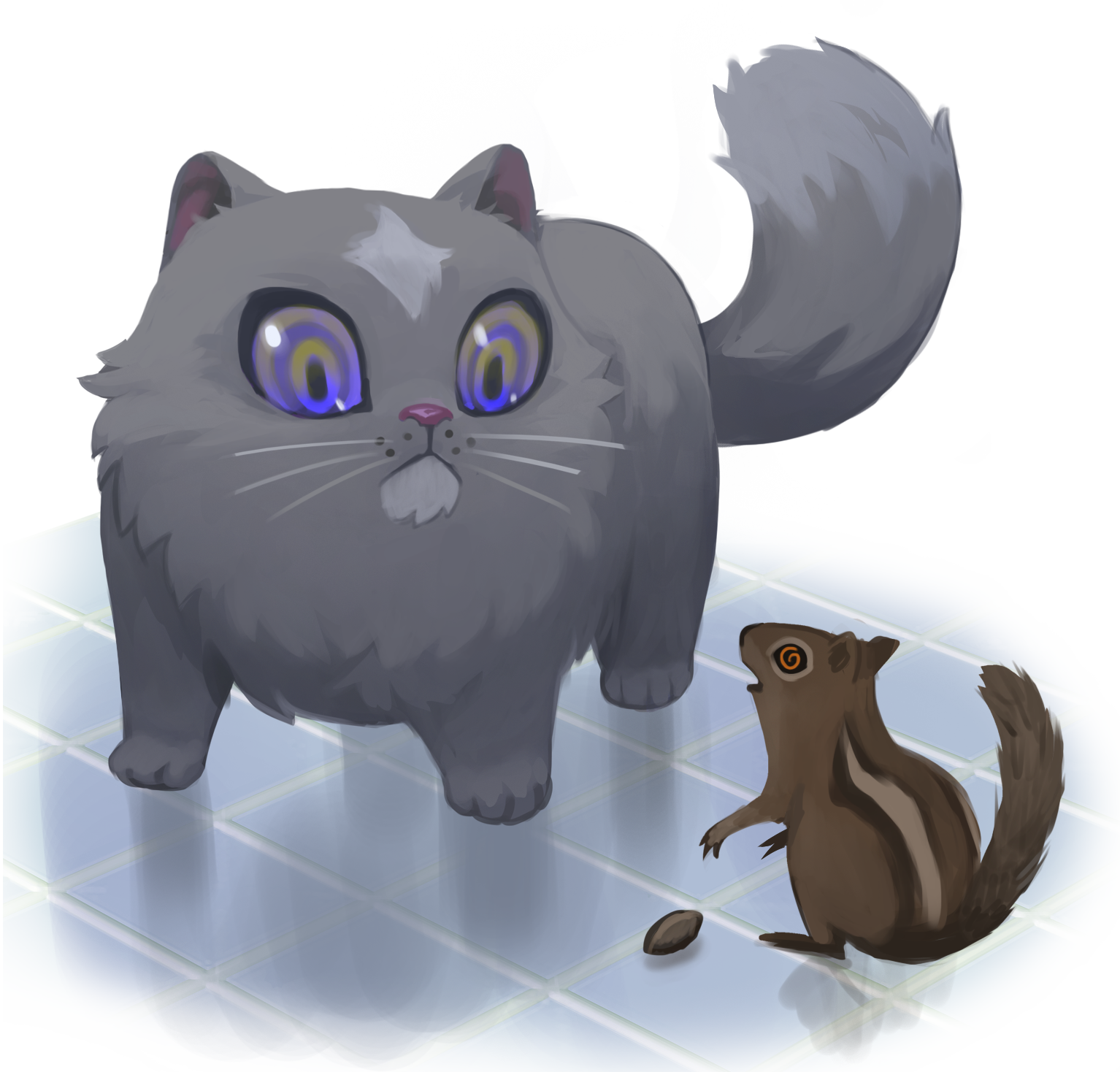 But for this to work well with new players, character generation should be quick, fun, and comprehensible.)
But for this to work well with new players, character generation should be quick, fun, and comprehensible.)
Second, we wanted the game to only use six-sided dice. I’m a big fan of the polyhedrons, but limiting the dice to just one type would (a) allow us to provide dice in the boxed set for a relatively low cost (so we could invest more in other features) and (b) provide a more familiar experience to players in our core target audience six to twelve year-olds.
As a result, during character generation you roll two six-sided dice and read them like percentile dice, generating thirty-six results from 11 to 66, to determine your Magical Power.
Some of you might be balking at this: The core audience is six to twelve year-olds and you want them to understand how to read non-standard percentile dice?
I shared those concerns. But then I did some research. It turns out that educational studies have not only indicated that kids in this age range can mentally comprehend these concepts, but understanding two-digit place value is part of the Common Core math standard for 1st graders (i.e., six-year-olds).
So if you’re pushing out of the core range and play with four- or five-year-olds, you’ll probably need to help them out a bit. (You might also consider using the optional Kitty Cards, that not only serve as fully illustrated references during play, but allow you to create a new character mostly by just dealing out a hand of cards.) But beyond that, it will be at worst a great learning opportunity.
POWER BALANCE
When it came to actually developing and playtesting the new Magical Powers, however, I found it to be a more unique challenge than I’d anticipated. Because each kitty has a unique Magical Power (before unlocking additional powers as they gain levels), the game inherently lacked some of the balancing elements that often find in other RPGs featuring powers. I couldn’t, for example, make one power Level 1 and another power Level 3 to reflect a difference in their strength or utility as I would in D&D; nor assign them different point values like I’d do in a game like Hero.
This meant that some powers that I initially thought would be really cool ultimately needed to be tossed out because they just couldn’t be given enough oomph to stand on equal ground with other 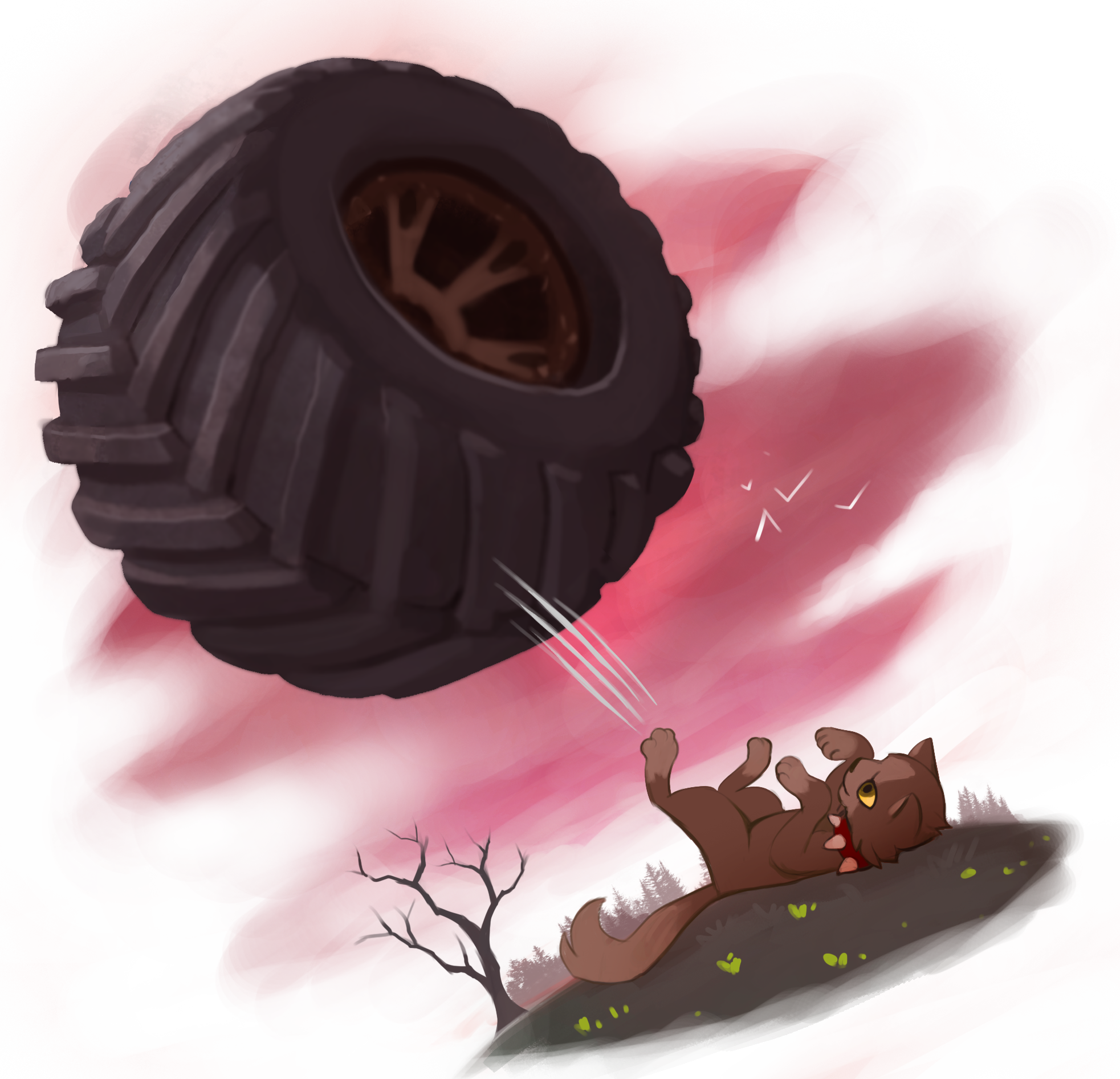 powers in the game. In other cases, limitations needed to be found to pull back a concept that would otherwise be too powerful.
powers in the game. In other cases, limitations needed to be found to pull back a concept that would otherwise be too powerful.
A further complication came in the form of Bonus Features. As a special effort, magical kitties can add a Bonus Feature to their power, making it more potent than usual. As they level up, they can also permanently add these Bonus Features to their powers. It was not only important that the Powers remain balanced with each other as Bonus Features were added, but essential that a Power could have awesome Bonus Features for kitties to unlock. (This meant that some powers that were fine in their basic form didn’t make the cut because there wasn’t a suitable upgrade path for them.)
I developed a couple rules of thumb:
First, no Magical Power could completely overlap another Magical Power. If both powers were being played by different kitties in the same session, I didn’t want one of the kitties to rendered obsolete. Bonus Features could “nibble” a bit on another power’s uniqueness, but the Bonus Features of the other power needed to give it a unique upgrade path.
For example, Super Strength lets a kitty pick up anything weighing as much as a horse or less. With the Bonus Feature of Heavy, Telekinesis can do the same thing (and better since you can lift it from a distance). But the kitty with Super Strength will have Bonus Features allowing them to eventually Pick Up a Whale and, later, Pick Up Anything. Telekinesis can never lift anything larger than a Horse, but has its own unique upgrade path allowing multiple objects to be manipulated simultaneously.
(Most powers don’t even get this close to each other. It’s an extreme example.)
Second, a Magical Power should have an active use: Part of the fun of the game is for players to think up creative and crazy ways that they can use their powers. Players shouldn’t have to passively 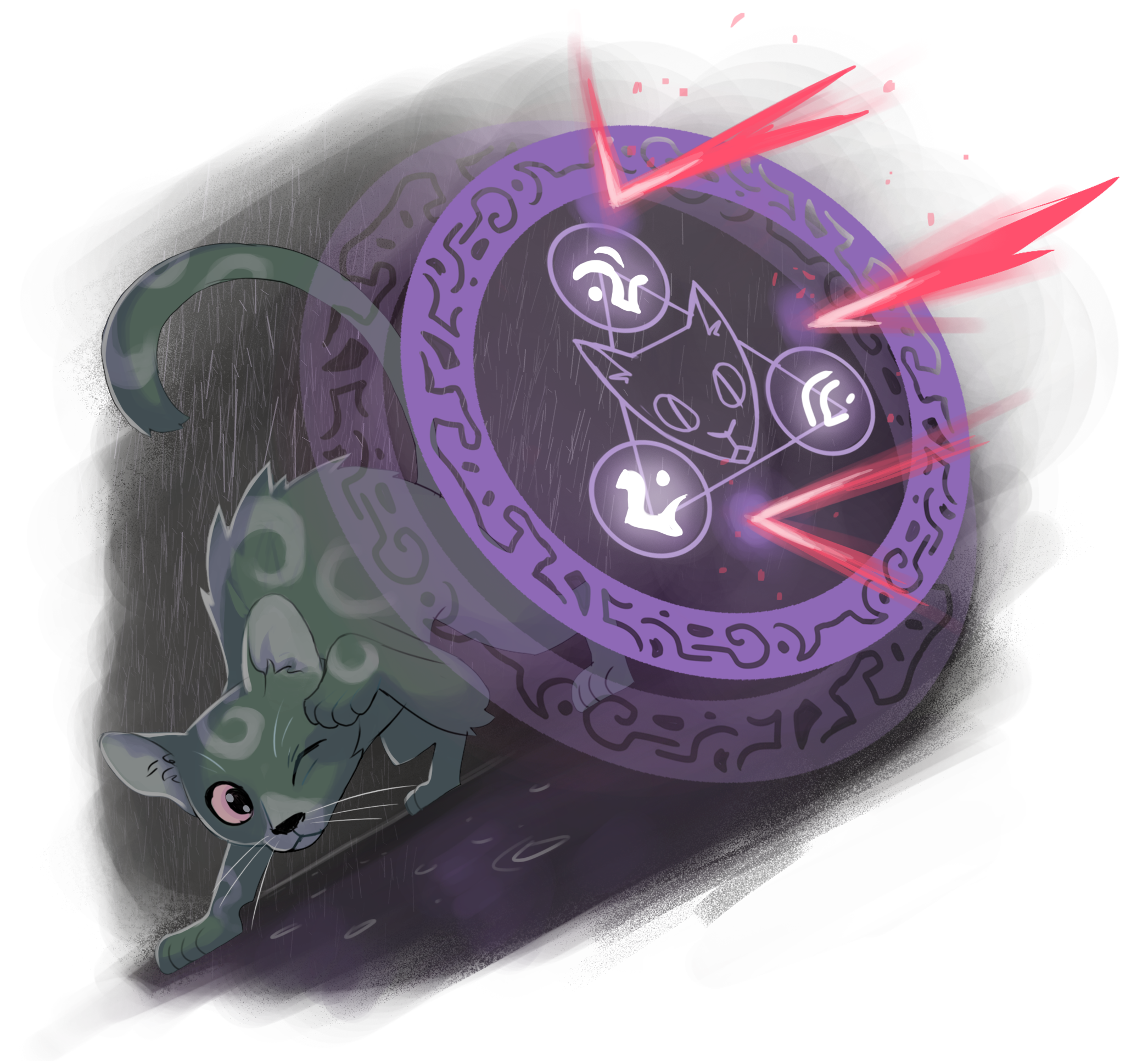 wait for the GM to cue them.
wait for the GM to cue them.
There are two exceptions to this: Energy Deflection and Force Field. These are both kind of iconic powers that players wanted, but they’re innately passive. To some extent this is OK because adventures tend to bring threats from which protection is desired (so you’re unlikely to end up in a situation where the GM just fails to ever cue up your power). But we also made these work by making sure their Bonus Features unlocked active powers: Thus, Energy Deflection allows you to target things with the deflected energy. And Force Field can be used to create things like invisible bridges.
As you can see, limiting Magical Powers so that they all needed to be in balance with each other came with some sacrifices and some tough design challenges. But the advantage of this approach was a robust, streamlined simplicity: Players don’t need to spend a point budget or juggle powers of different tiers or whatever.
This also allows character creation to easily manage different levels of mastery: A completely new player can rapidly roll up a new kitty in just a couple minutes, but those who familiar with the game can skip the random generation and design just the kitty they want by simply making choices at each step of character creation.
